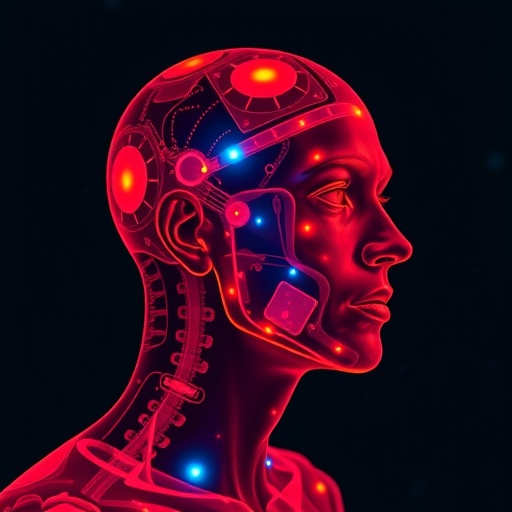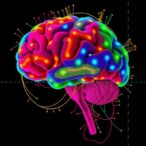
In the complex landscape of neuroscience, understanding how our brains represent and interact with the space immediately surrounding our bodies — known as peripersonal space — has posed a persistent challenge. Recent research by Bufacchi et al., published in Nature Neuroscience in 2025, sheds new light on this intricate spatial phenomenon by unveiling a compelling framework grounded in reinforcement learning and artificial neural networks. Their work fundamentally revises prior conceptions by demonstrating that the neural fields centered around body parts do not simply map stimulus configurations but, more crucially, encode action values associated with interactions in near-body space. This breakthrough offers an elegant explanation for long-standing empirical observations and suggests a unified theoretical platform for understanding peripersonal space through the lens of egocentric value maps.
Neuroscientists have long observed that individual neurons, as well as larger-scale neural activity patterns from techniques such as fMRI and EEG, manifest spatial tuning fields centered on parts of the body. These “body-part-centered” response fields often correspond to stimuli or events occurring in the immediate vicinity of limbs, the face, or the torso. Historically, this peripersonal spatial coding has been interpreted primarily as a sensory phenomenon, relating directly to the dynamic configurations of stimuli touching or near the body. However, this sensory-centric view has struggled to comprehensively explain the origins of these fields or their role in guiding behavior, especially across diverse contexts involving reward and learning.
Bufacchi and colleagues approached this enigmatic problem from a computational perspective, hypothesizing that these body-part-centered representations naturally emerge not merely as passive sensory maps, but rather as value-laden constructs optimized to predict and evaluate the outcomes of interactions with the environment. Their central premise is both intuitive and profound: agents — biological or artificial — frequently encounter objects in their immediate surroundings that yield either positive or negative consequences, effectively delivering rewards or punishments contingent upon contact. Thus, the brain’s representation of peripersonal space may principally encode the expected value associated with contact events, integrating sensory inputs into a coherent framework for decision making.
.adsslot_TPRODwZU7t{ width:728px !important; height:90px !important; }
@media (max-width:1199px) { .adsslot_TPRODwZU7t{ width:468px !important; height:60px !important; } }
@media (max-width:767px) { .adsslot_TPRODwZU7t{ width:320px !important; height:50px !important; } }
ADVERTISEMENT
To test this hypothesis, their team leveraged reinforcement learning paradigms implemented within artificial neural networks. These networks were designed to simulate agents navigating and interacting with objects in a virtual near-body environment, gradually learning to associate specific spatial locations relative to the body and particular body parts with varying levels of reward. Through iterative training, the artificial networks developed response fields exhibiting striking parallels to the peripersonal spatial fields observed in biological neural systems. Crucially, these emergent fields were not mere replicas of stimulus configuration maps; instead, they reflected computed action values, demonstrating a robust quantitative fit with experimental data.
One of the most compelling aspects of this research is how it unifies fragmented observations from various neuroscientific and behavioral studies under a single coherent theoretical umbrella. Peripersonal space has traditionally been dissected into disparate phenomena — from tactile receptive fields to multisensory integration zones, to cortico-subcortical networks implicated in threat detection and tool use. By framing peripersonal fields as egocentric value maps encoding the probabilistic association between body-centered contact and outcomes, Bufacchi et al. provide a parsimonious explanation that captures the diversity and adaptability of these fields across multiple neural modalities and timescales.
Moreover, this egocentric value mapping offers a modular architecture, enabling flexible and context-sensitive representations tailored to specific body parts and their roles in interaction. Such modularity was observed in the artificial networks, which spontaneously formed distinct yet interconnected subnetworks each associated with different body regions. This modular organization mirrors the known anatomical and functional segmentation of brain areas governing sensorimotor coordination, suggesting that these fields serve as foundational building blocks for constructing an agent-centric model of the proximate world.
From a neurophysiological perspective, the work draws a compelling parallel between these short-term, close-range egocentric maps and the longer-term, allocentric spatial representations mediated by the hippocampal formation. While hippocampal place cells encode a map of the external environment based on stable landmarks independent of the agent’s current orientation, the egocentric value maps highlighted in this study are inherently dynamic and body-referenced, emphasizing immediate interactions and their potential consequences. This dual-mapping framework resonates with emerging notions of how the brain integrates multiple spatial reference frames to support perception, action planning, and memory.
The implications of this research extend beyond basic theoretical neuroscience. Practical applications may soon emerge in robotics, prosthetics, and brain-machine interfaces, where equipping artificial agents or assistive devices with robust, value-sensitive spatial maps could markedly enhance their adaptability and interactive capabilities. Robots, for example, might better predict the outcomes of contact events in their immediate vicinity, leading to safer human-robot interactions and improved manipulation skills within cluttered environments. Similarly, prosthetic limbs integrated with neural decoding algorithms inspired by egocentric value mapping might achieve more natural and context-appropriate interactions.
An additional strength of this work lies in its capacity to generate precise, testable predictions that can guide future experimental research. For instance, the framework predicts that neural response fields should shift dynamically as the agent’s behavioral goals or reward contingencies change, a hypothesis amenable to empirical testing via electrophysiological or neuroimaging methods during altered task demands. Furthermore, it suggests that peripersonal space is not static, but a flexible construct continuously refined by experience and reinforcement signals, thereby reconciling prior disparate findings related to plasticity in peripersonal representations.
The study’s methodological innovation also highlights the growing convergence of computational neuroscience and machine learning. Unlike traditional models constrained by pre-existing assumptions about sensory coordinates or receptive field topologies, the reinforcement learning approach empowers networks to “discover” optimal representations driven solely by environmental contingencies and task structure. This bottom-up learning process mirrors biological evolution and development, pointing to fundamental principles by which neural circuits adapt and self-organize in response to environmental demands.
Integrating these insights with broader frameworks of sensorimotor control and body schema suggests an overarching principle: the brain constructs a value-based egocentric map that functions as the substrate for both perception and action. This map does not merely catalog what is near but encodes what matters in terms of potential rewards and penalties, enabling efficient decision-making and motor planning rooted in the agent’s immediate spatial context. It sheds light on phenomena ranging from defensive reflexes to goal-directed reaching and may have implications for understanding disorders where peripersonal processing is disrupted, such as in certain neurological or psychiatric conditions.
The research also invites reevaluation of classical notions in cognitive neuroscience, challenging the assumption that spatial representations are primarily sensory or attentional. Instead, spatial fields emerge as integral to an organism’s valuation process, linking perceptual inputs with motivational states and learning histories. This reframing bridges multiple domains—perception, action, motivation, and learning—providing a holistic vision of how the brain navigates the near-body world.
As Bufacchi et al.’s findings disseminate through the scientific community, they set the stage for interdisciplinary exploration involving neurophysiologists, psychologists, roboticists, and computational modelers. Understanding the egocentric value maps not only unlocks new dimensions of the neural organization of space but also suggests new avenues for enhancing human-machine symbiosis. In their elegant fusion of theory and computation, this work exemplifies the transformative potential of contemporary neuroscience to decode the subtle mechanics of how we perceive and act within the space that defines our very existence.
Ultimately, this landmark study redefines peripersonal space from a static sensory domain into a dynamic, modulatory, and value-driven construct. By anchoring neural response fields around valuation processes tied to body parts, the brain crafts a living map of opportunity and risk, guiding behavior with remarkable efficiency and adaptability. The concept of egocentric value maps heralds a paradigm shift in how we understand embodied cognition, promising rich insights into the neural foundations of spatial awareness, action, and learning at the intersection of mind, body, and environment.
Subject of Research: Neural representations of peripersonal space and value-based spatial coding
Article Title: Egocentric value maps of the near-body environment
Article References:
Bufacchi, R.J., Somervail, R., Fitzpatrick, A.M. et al. Egocentric value maps of the near-body environment. Nat Neurosci (2025). https://doi.org/10.1038/s41593-025-01958-7
Image Credits: AI Generated
Tags: action values in peripersonal spacebody-part-centered neural response fieldsBufacchi et al. 2025 study insightscomplex landscape of neuroscience researchegocentric value maps in brainempirical observations in neuroscienceneural activity patterns fMRI EEGneuroscience of peripersonal spacereinforcement learning and neural networksspatial representation in neurosciencetheoretical frameworks in spatial codingunderstanding near-body interactions



